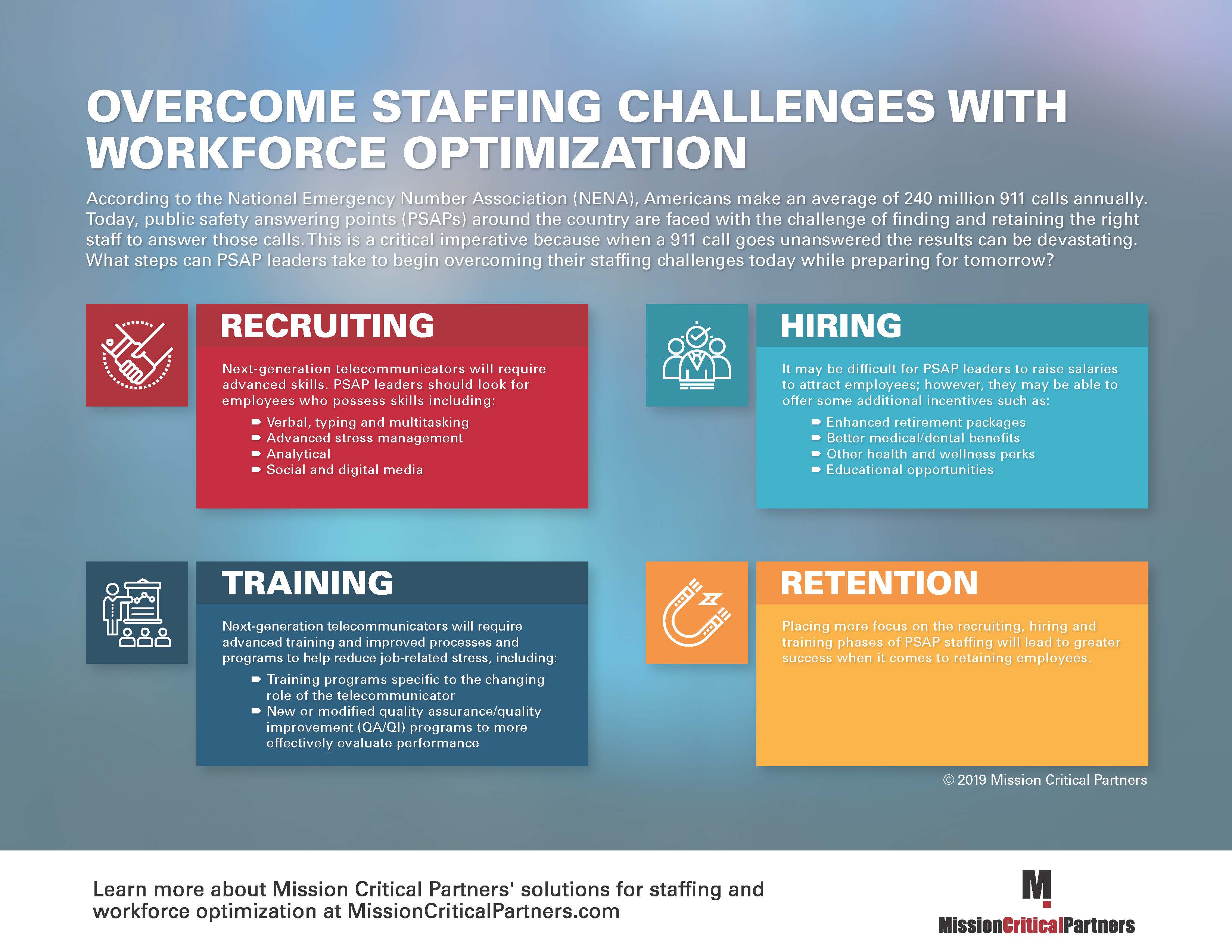Whitepaper: A Smarter Approach to Resolving the 911 Hiring Struggle
In Summary:
-
Staffing and hiring struggles have plagued public safety agencies for years and the situation is worsening
-
High personnel churn and attrition rates contribute to the shortage
-
Workforce optimization is the right approach for 911 officials looking to resolving 911 staffing struggles instead of simply focusing on recruitment
Staffing 911 centers has become a huge concern in the public safety communications community. In this report, we explore the concept of workforce optimization, of which training is one of four key pillars, with recruitment, hiring and retention being the others.
Topics: Consulting, Workforce Optimization, White Papers



